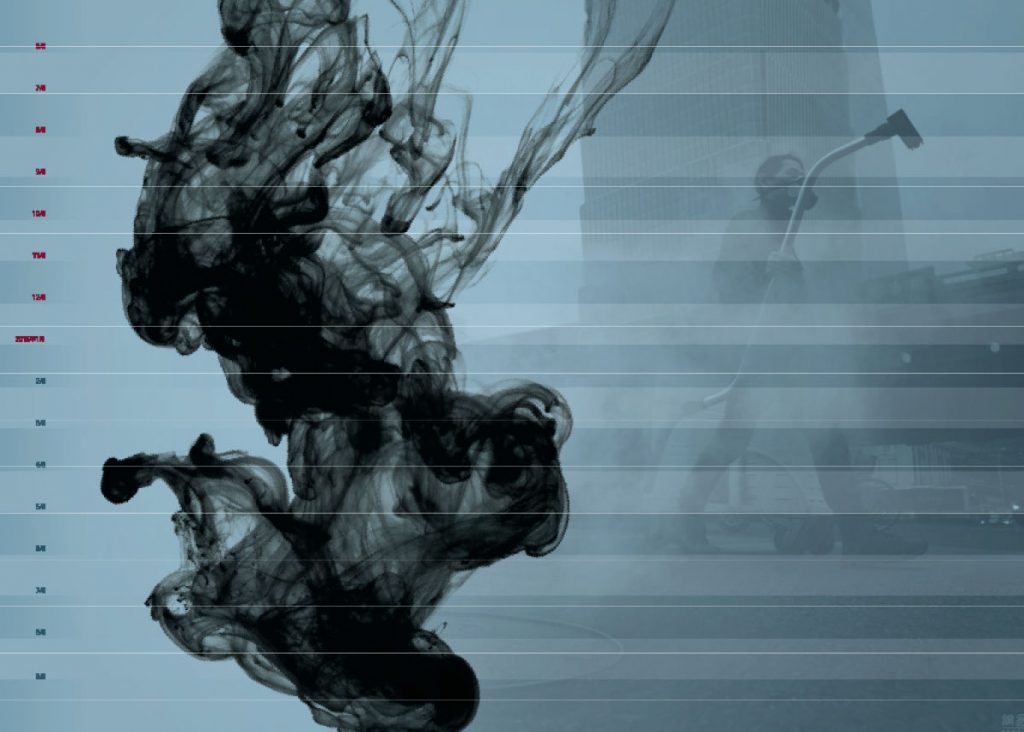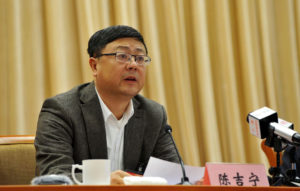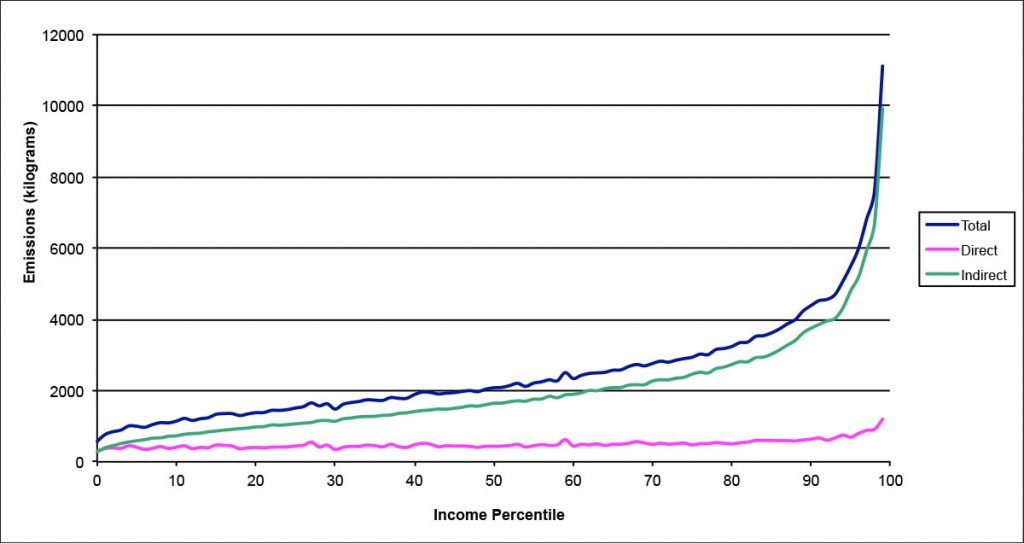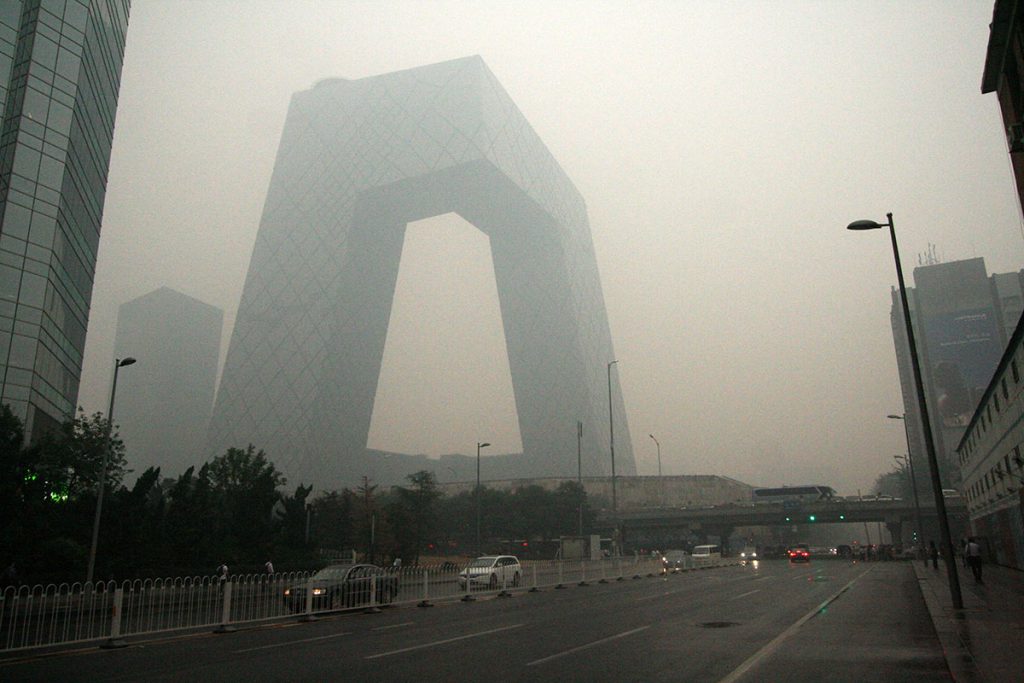Four decades of rapid economic growth has resulted in wide-ranging environmental damage across China (and beyond), from smog-ridden skies to contaminated rivers, toxic soils and ‘cancer villages’. These increasingly intolerable costs have emerged as a major source of social unrest in recent years. Premier Li Keqiang acknowledged this in his opening address to the National People’s Congress (NPC) on 5 March 2015: ‘China’s growing pollution problems are a blight on people’s quality of life and a trouble that weighs on their hearts.’
On 28 February, six days before Li spoke to the NPC, the former investigative journalist Chai Jing 柴静 released her documentary Under the Dome穹顶之下 on the Chinese Internet. Under the Dome vividly conveyed the nature of this ‘blight’ and struck a chord: its mainland Chinese audience exceeded 200 million people. Yet within two weeks of its release, it was no longer possible to download it in China, and official directives prohibited the Chinese media from any further reporting on the film. It is still available on YouTube but, of course, this is also blocked in China.
Clearly, the detailed, inconvenient truths laid bare in Under the Dome and the popular response to it were too much for the Chinese leadership to handle. It isn’t hard to see why. The film implicated party-state officials at every level in its highly critical assessment of the ‘growth at all costs’ industrialisation strategy of the last four decades. Its overarching message was loud and clear: that the central government was primarily to blame for blatantly failing to enforce its own environmental laws and regulations and call polluters to account. Whether either Premier Li or President Xi Jinping had seen the documentary, they seem to have got the message. Xi declared in his own address to the NPC meeting on 6 March that, ‘We are going to punish, with an iron hand, any violators who destroy the ecology or the environment, with no exceptions.’
The Plan: Green from the Top Down
Fortunately, this is not the government’s only strategy for addressing China’s environmental crisis. The central government had already produced an abundance of plans to tackle China’s environmental problems during the period covered by its Twelth Five-Year Plan (2011–15). It further ramped up its efforts following Premier Li’s declaration of a ‘war on pollution’ in 2014. In November 2014, the National Development and Reform Commission (NDRC) 国家发展和改革委员会 released the National Plan for Responding to Climate Change (2014–2020) 国家应对气候变化规划. This outlines strategies including strengthening laws and regulations on climate change and limiting large-scale industrialisation and urbanisation. It also proposes defining ‘ecological red lines’ (a baseline level of ecological health that must be maintained) for key areas including the headwaters of the Yangtze and Yellow Rivers. Other strategies include limiting total coal consumption, and actively promoting cleaner energies. The language of ‘strengthening’, ‘limiting’, ‘defining’, ‘controlling’, and ‘promoting’ is indicative of the central government’s intention to drive China’s climate change agenda from the top down.
In February 2015, the NDRC published its roadmap for a nationwide emissions trading scheme (ETS). This will build on the seven pilot programs that have been implemented since 2013 in Beijing, Shanghai, Chongqing, Shenzhen, and Tianjin, as well as Guangdong and Hubei provinces. Together they comprise the second largest ETS in the world after that of the European Union. The national scheme, to be launched in 2017, will create the world’s largest carbon market, and by a big margin.
In his March 2015 report to the NPC, Premier Li committed the government to a wide range of specific energy conservation and emission reduction measures as well as environmental improvement plans and projects. These support China’s official quest for ‘green, low-carbon and recycled development’ 绿色低碳循环发展, the catch-phrase for its environmentally-friendly growth strategy. They include an action plan for preventing and controlling air pollution, upgrading coal-burning power plants to achieve ‘ultra-low’ emissions similar to those produced by gas, promoting clean-energy vehicles, and improving fuel quality to meet the new ‘National V’ standard by which the sulphur content in fuel must be less than ten parts per million. There are also ambitious plans to develop renewable energies including wind power, photovoltaic power, biomass energy, and hydropower, as well as safe nuclear power. Li also announced that the energy conservation and environmental protection industry would become a ‘new pillar of the economy’ 经济新支柱 and that ‘green consumption’ 绿色消费 would become the path to stimulating the domestic consumer economy.
The following month, the Chinese government committed to establishing a ‘green financial system’ 绿色金融体系. A report produced by experts from the People’s Bank of China (PBoC), the China Banking Regulatory Commission, the Ministry of Finance, other Chinese banks, the Chinese Academy of Social Sciences, universities, think tanks, and more laid out the blueprints for this system. In his foreword to the report, Pan Gongsheng 潘功胜, Deputy Governor of the PBoC refers to the ‘opportunity’ he had to watch Under the Dome, an interesting choice of words. In a key passage, he reinforces the message that in China, change must come from the top down: ‘For policymakers, these worsening environmental problems require the further enhancement of top-level design and the improvement of market mechanisms and policy support systems, so as to provide the conditions necessary for various stakeholders to participate in environmental management and protection.
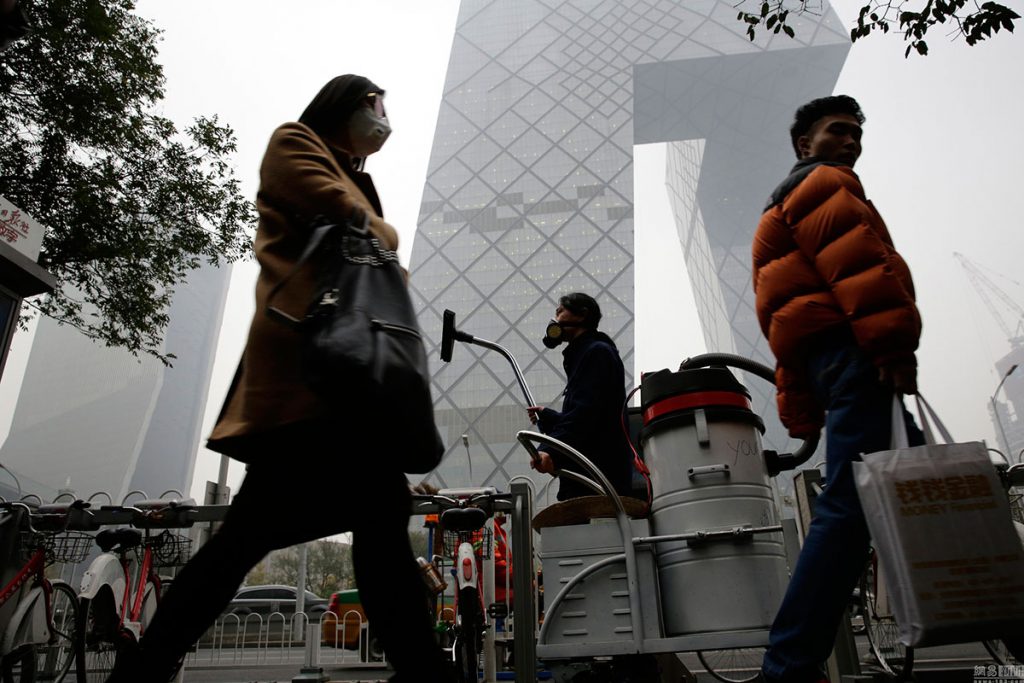
Wang Renzheng, a Chinese performance artist better known as Nut Brother, with the industrial vacuum cleaner he uses to suck up smog and turn it into ‘smog bricks’
Photo: tech.163.com
China also introduced numerous plans to tackle climate change on a global level in the period leading up to COP21—the Conference of Parties meeting of the United Nations Framework Convention on Climate Change (UNFCCC)—in Paris in December 2015. In June, China submitted its ‘Enhanced actions and measures on climate change’ to the UNFCCC Secretariat. These provided the basis for the country’s ‘intended nationally determined contributions’ (INDC) to the negotiations. They set out the target of reaching peak CO2 emissions around 2030. By that time, carbon intensity (CO2 emissions per unit of GDP) would be reduced by sixty to sixty-five percent from the 2005 levels, and the share of non-fossil fuels in primary energy consumption would increase to around twenty percent from the current level of 11.2 percent.
The Thirteenth Five-Year Plan (2016–2020)—the first one produced under the leadership of Xi Jinping—will emphasise government commitment to environmental protection when it is formally adopted in March 2016. The draft proposal, released in November 2015, names the environment as one of the ‘five key points’ of the economy. It stresses ‘green’ and ‘sustainable’ development and the Party’s intention to promote a ‘low-carbon energy system’. It is possible that a cap on coal use or a ban on new coal-fired power plants will become part of China’s long-term development strategy. Given its global economic clout, a greener China could become a catalyst for worldwide change.
The Reality: Smog from the Bottom up
As Under the Dome made abundantly clear rules, regulations, and plans have so far failed to green China. The documentary exposed both industry’s and local governments’ notoriously low compliance with central government regulations, pointing to problems at every level. These include failures in co-ordinating action among ministries with conflicting interests; the blind pursuit of rapid economic growth by provincial governments; the vested interests of powerful, corrupt, and monopolistic state-owned energy and power companies; and the self interest of tens of millions of new car owners, many of whom run their vehicles on low-standard fuel that fails to reach national standards. As Chai succinctly sums it up: ‘No regulations, no authority, no law enforcement—the conundrum of environmental protection right there’.
One of the many damning examples Chai Jing uses to illustrate her point begins with a visit to a truck tolling station, where trucks are checked to see if they are complying with emission standards. Many of the truck drivers fail the test. In one case witnessed by Chai, the official in charge does not impose the requisite on-the-spot fine because he notes that the truck is carrying food that is part of the city’s supply system—and local regulations stipulate that such transport cannot be disrupted.
Chai Jing then reveals a thriving industry for ‘fake cars’, vehicles manufactured without the required emission controls devices in the first place, and which produce emissions that can be 500 times the national standard. In theory, the ‘Atmospheric Pollution Prevention Act’ 大气污染防治法 of 2002 could be used to shut down the manufacture of such cars, but Chai discovers that no government department has been charged with enforcing the act. She records an official at the Ministry of Environmental Protection (MEP) saying, ‘As far as we know, it’s not us.’ One from the Ministry of Industry and Information Technology tells her, ‘It’s definitely not us.’ A third from the General Administration of Quality Supervision and Inspection insists, ‘It should be all three of us.’ Finally, she calls an official at the National People’s Congress who tells her: ‘The issue of the execution of this law is indeed unclear.’ He acknowledges that they’d made it that way on purpose because so many government departments opposed the act. The result puts manufacturers in a corner. As one of the factory owners explains: ‘If we build real trucks and others build fake trucks, we would be bankrupt tomorrow.’ An MEP official admits, ‘Not enforcing the law forces people to cheat.’

According to Under the Dome, Beijing’s daily PM2.5 level is five times that of China’s average Photo: fotomen.cn
Chai then turns to the issue of why Chinese fuel standards are set so low compared to those elsewhere. She asks why fuel required to reach the then-highest National Standard Four was still in such low supply, accounting for just three percent of all available fuels. Yue Xin 岳欣, a director of the Chinese Research Academy of Environmental Sciences, informs her that representatives of China’s oil industry dominate the standards committee. Neither the MEP nor the NDRC have the power to enforce higher standards. Baffled, Chai Jing questions Cao Xianghong 曹湘洪, head of the National Fuel Standards Committee and former chief engineer at the state-owned China Petrochemical Corporation (Sinopec). Cao defends the role of the oil industry in setting fuel standards because, he tells her, he doesn’t believe that people from the MEP understand the oil refining business.
As if that unblushing insult to the state ministry tasked with China’s environmental protection wasn’t enough, Cao then addresses the question of whether Sinopec, the second largest company on the Fortune Global list in 2014 and described by Fortune as the ‘king of China’s state-owned hierarchy’, should have to take greater responsibility for its impact on the environment. ‘Sinopec’, he says, ‘is huge, like a person, very big, but it’s all fat and no muscle’, implying a lack of will, if not ability.
Chai Jing then addresses the issue of corruption in the energy industry’s relations with the party-state. Citing the views of an official convicted for corruption, she describes the links forged in recent years between people in the National Energy Administration, Sinopec, electricity distribution firms, and the coal and mining industries. The film raises serious questions about Sinopec’s involvement in setting the standards for fuel that it both produces and sells in a highly concentrated, state-dominated market.
Other stories told in Under the Dome illustrate the connection between industrial emissions and the ‘unstable, unbalanced, uncoordinated and unsustainable’ development model of the past. The film also highlights the urgent need for China to rebalance its economy away from energy-intensive production, as well as to price energy according to market principles, to eliminate subsidies for ‘dirty’ industries, and to tackle powerful state–owned enterprises (SOEs) (like Sinopec) whose vested interests are at odds with the central government’s green growth agenda. While the plans for action announced in 2015 are encouraging, clearly far more remains to be done.
A Case of Consumption
Within days of the release of Under the Dome, the newly appointed Minister for Environmental Protection, Chen Jining 陈吉宁, praised its ‘important role in promoting public awareness of environmental health issues’. He saw it as encouraging individuals to play their part in improving China’s air quality. In fact, very little of the film focuses on the responsibility of individual citizens, until the concluding ten minutes when Chai Jing notes that ‘Even the most powerful government in the world can’t control pollution by itself.’ Turning her attention to the choices made by ‘ordinary people, like you and me’, she urges her viewers to take public transport, walk, ride bikes, and avoid burning low-quality coal, as well as to report polluters and boycott the goods of listed polluting manufacturers. According to Chai Jing, with collective action, and ‘a little thought and care, the smog will start to clear’.
If only it were that simple.
China’s plan to rebalance the economy towards domestic consumption is coupled with its National New-Type Urbanisation Plan (2014–2020) 国家新型城镇化规划. The plan aims to raise the urban proportion of the population from fifty-three percent in 2013 to sixty percent in 2020. If successful, this will create a middle class the size of which the world has never seen before. The global environmental consequences of hundreds of millions of new urban consumers will be unavoidable and immense—whether their rising demand is satisfied by China’s domestic production or elsewhere.
The number of cars in China, for example, has increased by around one hundred million in the last decade. In cities including Beijing and Hangzhou, car emissions are now the primary source of PM2.5. The Development Research Centre of the State Council predicts that there will be 400 million private vehicles in China in fifteen years time. Car owners don’t only consume energy directly in the form of petroleum at the pumps. The production of cars requires energy as an input, and other inputs that use energy as an input (most obviously steel), and so on down the chain.
More generally, individuals consume energy directly in the form of coal, natural gas, petroleum, and electricity and indirectly through the many goods and services that require energy. Indirect energy consumption—and associated emissions— is likely to grow substantially in China in the years ahead.
In researching this topic, I calculated the direct and indirect energy use and subsequent emissions per capita of 33,000 urban Chinese households. The graph opposite illustrates the results, plotted across income percentiles (ranging from the poorest to the richest one percent of the sample population). As seen, total energy consumption, and therefore emissions, increases as income rises. This may be an obvious point: richer people have more to spend, so they tend to consume more of just about everything. But people can only consume so much energy directly, no matter how rich they are. More importantly, the figures show that indirect emissions rise even more when income increases. At higher levels of income, indirect emissions are an even greater problem than direct emissions.
On the other hand, consumer choices can change, and production technologies and environmental policies can make the production of all goods and services greener over time. Given its population size, and its global emissions ranking, no country has a greater incentive than China to turn this potential into reality. Yet it needs to make serious efforts to address such fundamental issues like the legal ambiguity, bureaucratic buck-passing, and corporate bullying as described above. Otherwise it is highly unlikely that a program of promoting a ‘green, low-carbon, healthy, and civilised way of life and consumption patterns’ together with the kind of personal activism advocated by Chai Jing will be enough to tackle the country’s complex environmental crisis.
Under Which Dome?
Chai Jing borrowed the name Under the Dome from a US television series about a small town upon which a dome descended out of nowhere, cutting it off from the rest of the world, providing no way out. Yet this is not a perfect metaphor for China’s reality. In an increasingly integrated global economy—in which China is both the largest exporter and one of the largest overseas investors—we are all effectively living under the same dome.

November 2015: As world leaders converged on Paris for the World Climate Change Conference 2015, residents of Beijing and other cities in eastern China faced the most severe air pollution the nation saw that year
Photo: earthobservatory.nasa.gov
The Chinese government played a critical role at the COP21 meeting that, as the official agreement states, marked ‘a change in direction, towards a new world’. The Paris agreement confirms the target of keeping the rise in global temperature below 2°C, and ideally 1.5°C, with 186 countries publishing ‘action plans’ for achieving targeted reductions in green- house gas emissions. The agreement asks all countries to review these plans every five years beginning in 2020, not to lower their targets where possible, to reach peak emissions ‘as soon as possible’, and to ‘achieve carbon neutrality in the second half of the century’.
The impetus for finding a global solution to what is clearly a global problem gathered momentum in Paris. Yet the challenges of implementation remain huge, for at least two reasons.
First, in all of its policy documents, China stresses its status as a developing country and the principles of ‘equity and common but differentiated responsibilities and respective capabilities’. These principles were a dominant theme at the twentieth BASIC (Brazil, South Africa, India, and China) Ministerial Meeting on Climate Change in June 2015. It called on developed countries to take the lead in emission reductions and provide financial support to developing countries for green technology and capacity building, as well as to mitigate against and adapt to climate change. COP21 confirmed that developed countries remain committed to raising US$100 billion per year by 2020 from public and private sources to address the needs of developing countries. Yet developed countries have collectively failed to provide this funding since 2010 when the commitment was first made—falling short, according to World Bank estimates, by about US$70 billion per year.

November 2015: President Xi Jinping delivers a speech for the opening day of the World Climate Change Conference 2015 (COP21) at Le Bourget, near Paris
Photo: news.xinhuanet.com
Second is what is known among economists as the ‘pollution haven hypothesis’. This suggests that foreign investors will be drawn to countries where environmental regulations are weak and production costs are relatively low. As China tightens up on its own environmental regulations, its ‘dirty’ industries are likely to try and relocate offshore. There’s no reason to think that the Chinese multinationals will be any better than Western ones at resisting the option of looking for ‘pollution havens’. These are most likely to be found in other developing countries, where the urge for stronger environmental regulation often loses out to the pressing need for economic growth.
This hypothesis will be tested as China rolls out its One Belt One Road Initiative, (OBOR), which refers to the ‘Silk Road Economic Belt and Twenty-First Century Maritime Silk Road’ 丝绸之路经济带和21世纪海上丝绸之路. OBOR aims to enhance China’s connection and co-operation with other parts of Asia, Europe, and Africa through increased regional trade as well as cultural exchange. It requires the construction of an infrastructure network, including new ports, railways, roads, and so on throughout the region, as well as improvements to existing infrastructure. This will be by its very nature energy intensive, just as China’s internal infrastructure expansion has been in the past. While official policy documents stress that the initiative will ‘promote green and low-carbon infrastructure’, it will take concerted bilateral and multilateral efforts to turn these ambitions into reality.
The problem of ‘pollution havens’ extends beyond developing countries. In 2014, then Australian prime minister Tony Abbott publicly stated that coal is ‘good for humanity’, and the ‘foundation of prosperity for now and the foreseeable future’. This was the opposite view to that of the United Nation’s top climate official, Christiana Figueres, who warned that most of the world’s coal must be left in the ground if we are to prevent catastrophic global warming. Abbott’s pronouncement, and his climate change policies generally, received much criticism both within Australia and overseas, including from China. Yet even Abbott’s successor as Prime Minister, Malcolm Turnbull, who once supported the introduction of an ETS, now appears to shares his predecessor’s aversion to ‘green tape’ (environmental-based regulations). The Turnbull government has given conditional approval to the Chinese state-owned company Shenhua Watermark to open a highly controversial coalmine in the fertile Liverpool Plains area of New South Wales. Shenhua, which is the world’s largest coal supplier, plans to invest AU$1.2 billion in the mine, from which it intends to extract ten million tonnes of coal per year for thirty years. Unless there is an unexpected change in policy direction, Australia could soon find itself home to some of China’s dirtier industries in the future—in short, a pollution haven.

December 2015: Chinese authorities issue their first ever ‘red alert’ for Beijing as acrid smog enveloped the capital
Photo: bj.jjj.qq.com
On 8 December, as 2015 was drawing to a close, the Beijing authorities issued the first ‘red alert’ for air pollution since the introduction of an environmental emergency response system in late 2013. A red alert—declared if Air Quality Index readings of PM2.5 exceed 200 milligrams per cubic metre or more for at least three days in a row—places temporary restrictions on the city’s cars, factories and construction sites, and shuts down schools. Yet critics accused the city’s environment bureau of taking too long to issue the alert, given that in the week preceding it, PM2.5 levels had been close to 1000, forty times the World Health Organisation’s guideline limit of twenty-five. But Beijing’s ultimate decision signalled that it was capable of choosing the environment over the economy, at least in desperate circumstances.
The rhetoric of the highest levels of government, including its threat of ‘iron-handed punishment’ for environmental lawbreakers, signals a sincere interest in tackling China’s environmental problems. Yet without a more systemic program of environmental management within China, similarly strong commitments by all the nations of the world, and substantial personal efforts on the part of the world’s 7.3 billion individuals (especially the billion or so richest ones) it is hard to imagine an escape from ‘under the dome’.
Notes
See Jane Golley and Xin Meng, ‘Income inequality and carbon dioxide emissions: The case of Chinese urban households’, Energy Economics, vol.34, no.6 (11/2-12): 1864–1872: https://www.researchgate.net/profile/Jane_Golley/publication/256967923_Income_inequality
_and_carbon_dioxide_emissions_The_case_of_Chinese_urban_households/links/0deec529
808d0ceffd000000.pdf
For more information on COP21 Agreement, see: http://www.cop21.gouv.fr/en/more-details-about-the-agreement/
For more information on the National Development and Reform Commission’s initiative, One Belt One Road (OBOR), see: http://en.ndrc.gov.cn/newsrelease/201503/t20150330_669367.html


